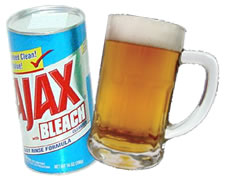 It’s the only time you should mix Ajax and beer: at Ajax Pub Night, which takes place here in Toronto on Monday, January 14th. Here are the details:
It’s the only time you should mix Ajax and beer: at Ajax Pub Night, which takes place here in Toronto on Monday, January 14th. Here are the details:
Here’s what Brent has to say about Ajax Pub Night:
We’re here to build a community around Ajax and create opportunities to meet face to face at events small and large.
Ajax is a unifying word that brings a number of technologies and techniques together to express one concept – a way to build compelling browser-based applications that comprise the foundation of the future of the web.
Let’s start with a Toronto-based Ajax Pub Nite, informal and unstructured. Once some community is established we can introduce evening Ajax Presentations and Demos and/or Ajax Workshops and build up to an eventual full-day Ajax Camp, perhaps inspiring people from different locales to join in here and set up their own events worldwide.
I’ve been to similar pub nights at the Rhino, and generally the ideas flow as freely as the beer. If you’re interested in Ajax development and are looking to get some new ideas, meet your peers and possibly land a job (it’s happened at these gatherings), come on down to Ajax Pub Night this Monday! I plan to be there.

 It’s the only time you should mix Ajax and beer: at Ajax Pub Night, which takes place here in Toronto on Monday, January 14th. Here are the details:
It’s the only time you should mix Ajax and beer: at Ajax Pub Night, which takes place here in Toronto on Monday, January 14th. Here are the details: